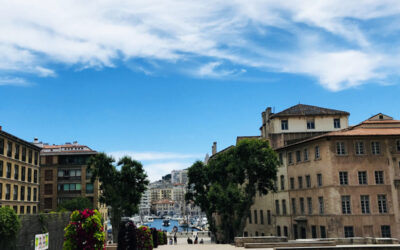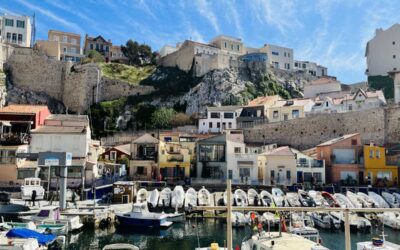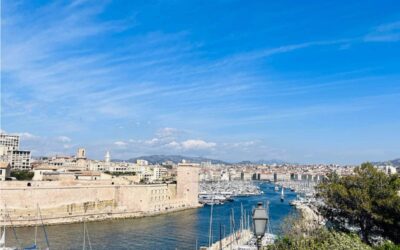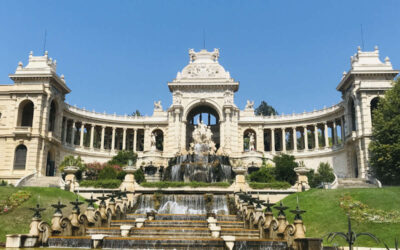For the locals, Le Panier is special. A tiny little quartier in the city of Marseille, right next to the city’s historic harbor, the Vieux Port (Old Port) that today has become a tourist attraction for visitors.
A neighborhood still standing after centuries, in the middle of a large metropolitan city, surviving bloody wars and zealous architects to remain standing stronger than ever.
So let’s have a look at top attractions in Le Panier and how it became such a hotspot in Marseille, shall we? Allons-y!
History
Le Panier means “Basket” in French, and today it is kind of a basket, of narrow alleyways, tiny shops, and colorful buildings. The city of Marseille claims to be among the oldest in France dating to at least 600 BC, even older than historic rival Paris which was founded around 250 BC.
The Old Port is a natural harbor, inviting sailors, tradesmen and soldiers from all over the Mediterranean since the days of the Greek and Roman empires. And yet, if you walk around Marseille, you will notice that Le Panier is the only part that looks historically old.
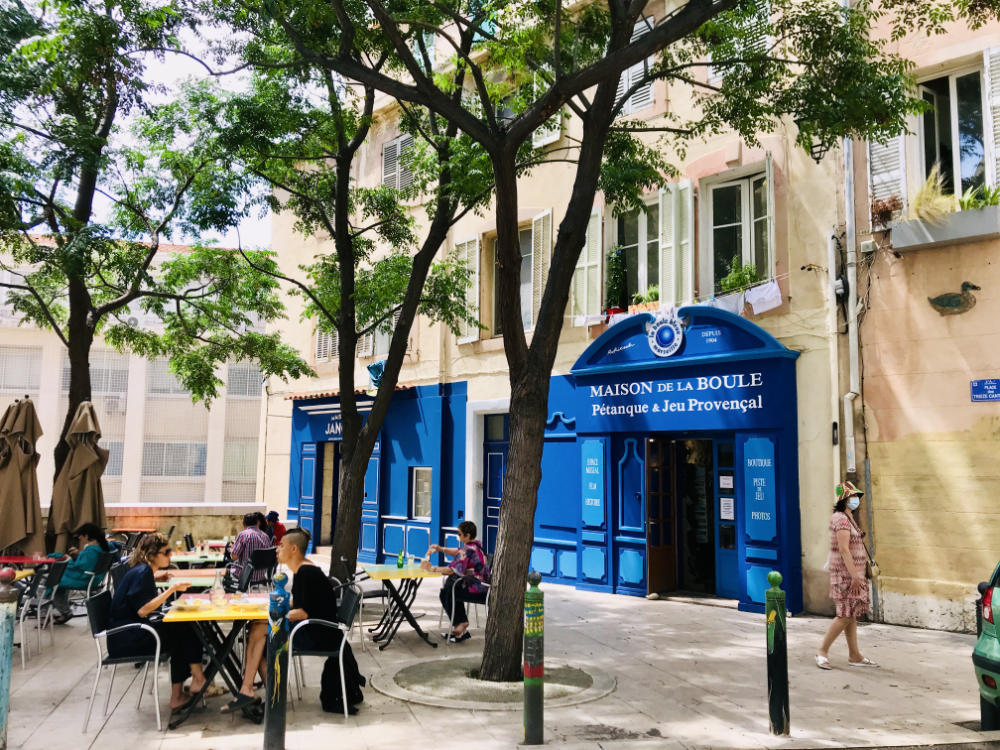
That is because most of the old neighborhoods around the Vieux Port were dynamited and pulled down during WWII by the German army, claiming that they were unhygienic, and also to bring the local population to heel.
During WWII, while Paris was fully under German control, Marseille was technically in the “Free Zone”, which was managed by the Vichy Government (with their German overlords).
Marseille’s strategic position on the sea made it an early hub for the French Resistance for escape routes and safehouses. The city’s propensity for rebellion was an advantage, rather than a disadvantage. But while Hitler considered Paris was too beautiful to be bombed, he did not have any such reservations about Marseille.
Marseille was bombed several times and invaded by German soldiers. Many neighborhoods including much of the area around Marseille’s famous Vieux Port and Le Panier were deliberately blown up with dynamite, before finally being liberated in 1944 by the Allies. This remaining part of Le Panier is unique in that it survived.
After the war, the area around the Vieux Port was rebuilt as Marseille and France struggled back. The area remained mostly untouched, but a scruffy little neighborhood that just happened to be there.
It was not until the massive renovation projects in the early 2000’s that the entire area around got a good cleaning and a lick of paint. Marseille was declared the European capital of culture in 2013, and artists started to flock to the area, attracted by its charm and je ne sais quoi.
The area has gentrified as more and more tourists visit the “Phoenician City”, as Marseille is affectionately called. Today, Le Panier attracts a lot of visitors and is one of the top things do in Marseille.
Things to do
1. Walk the small streets
Le Panier is made up of lots of little streets that connect large spaces. It has the feel of a small provençale village, in the middle of a big city. While you may want to just wander around, keep a lookout for Rue du Petit Puits which connects to Place de Lenche.
Another highlight is Rue du Panier which goes from the Place des Treize Cantons to Place des Moulins.
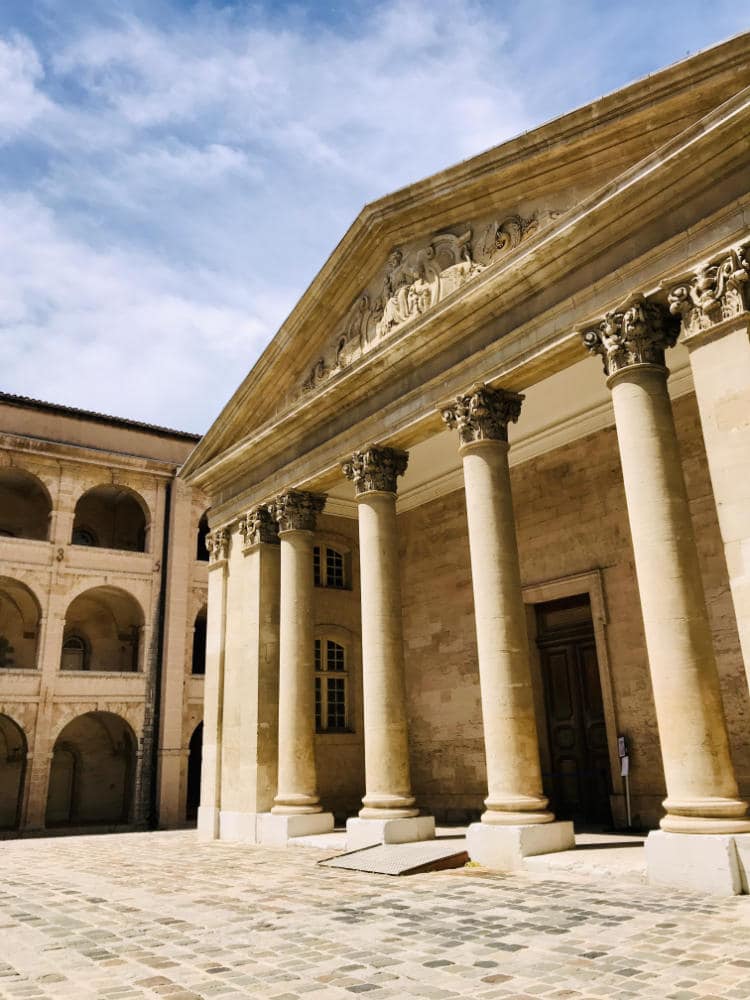
2. Visit the Vieille Charité
A few steps away from the Rue des Puits is the imposing walls of the Vieille Charité. Literally translating to “Old Charity”, the building was constructed in the 17th century by famous architect Pierre Puget, whose name you will see all around Marseille.
While the name may sound charitable, the place was not. City officials at the time were not happy about having poor people on the streets of Marseille, and so rounded them up and imprisoned them here. The place became a workhouse where all beggars, including children, were given jobs as domestic servants, apprentices, and other menial tasks.
Later in the 18th century, the place became a hospice. During World War II, as portions of the Vieux Port (near Centre Bourse) were destroyed by German dynamites, the place became a refuge for those who had lost their homes.
Today, the place houses a museum, as well as a university of higher learning called EHESS, which offers Phd and Masters studies.
You can freely walk around the interior courtyard, but the museum costs around €6/person for entry.
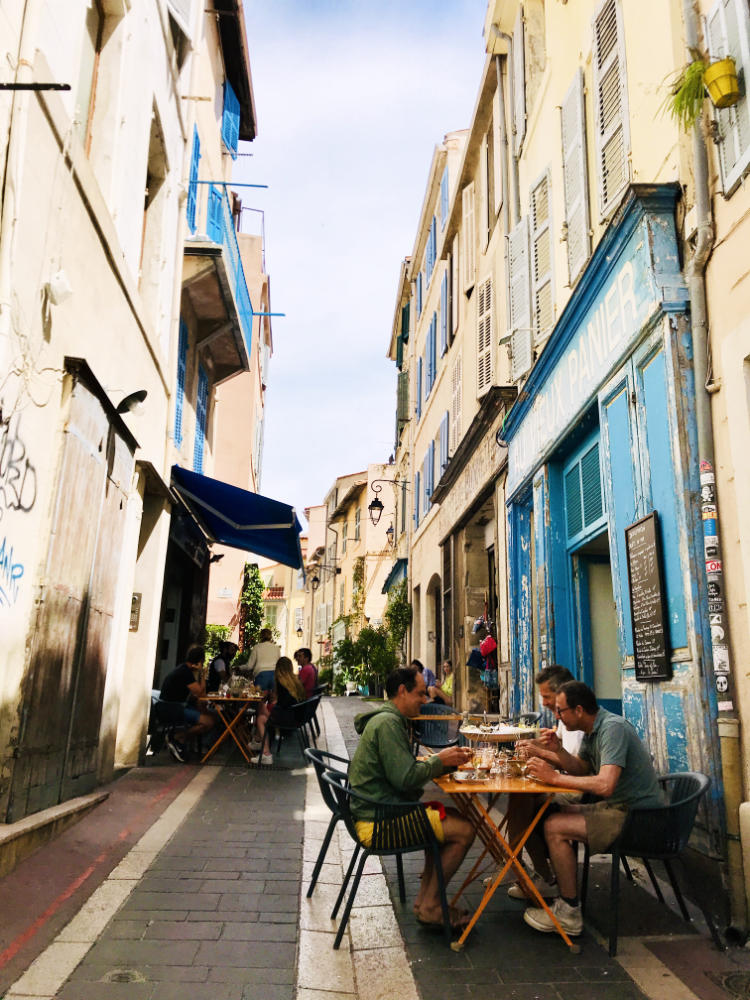
3. Have lunch at a local café
There are many small mom-and-pop cafés and restaurants in the Panier, so you won’t want to miss having lunch here with a glass of the local pastis.
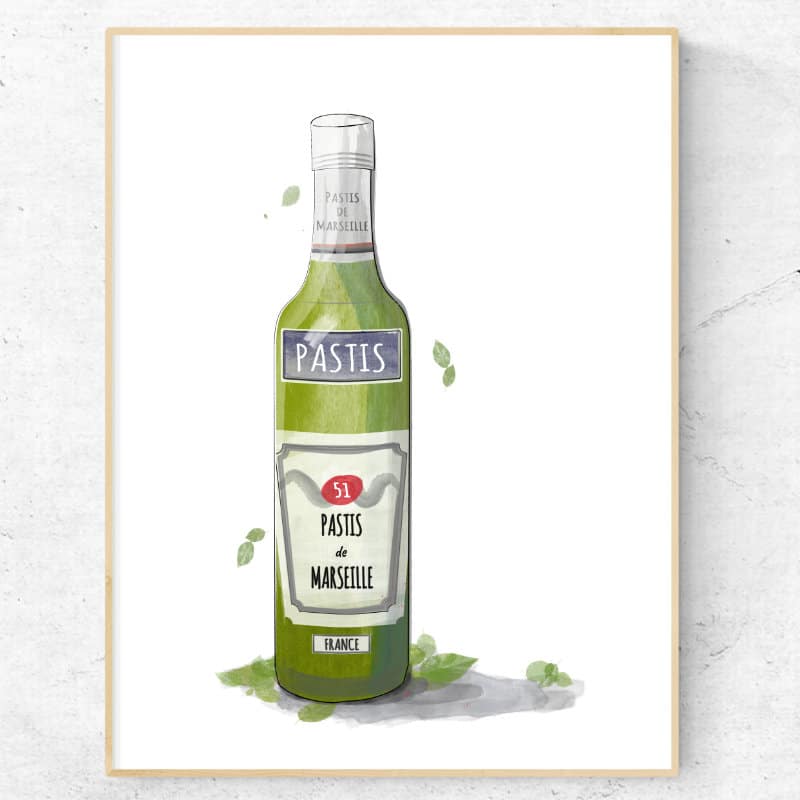
If you are a seafood-lover, order the fresh seafood platters to share, which feature crustaceans and fish caught daily that come in through the Vieux Port, along with local wine, such as the Coteaux d’Aix-en-Provence Blanc. You can read more about local foods and drinks to try in Provence here.
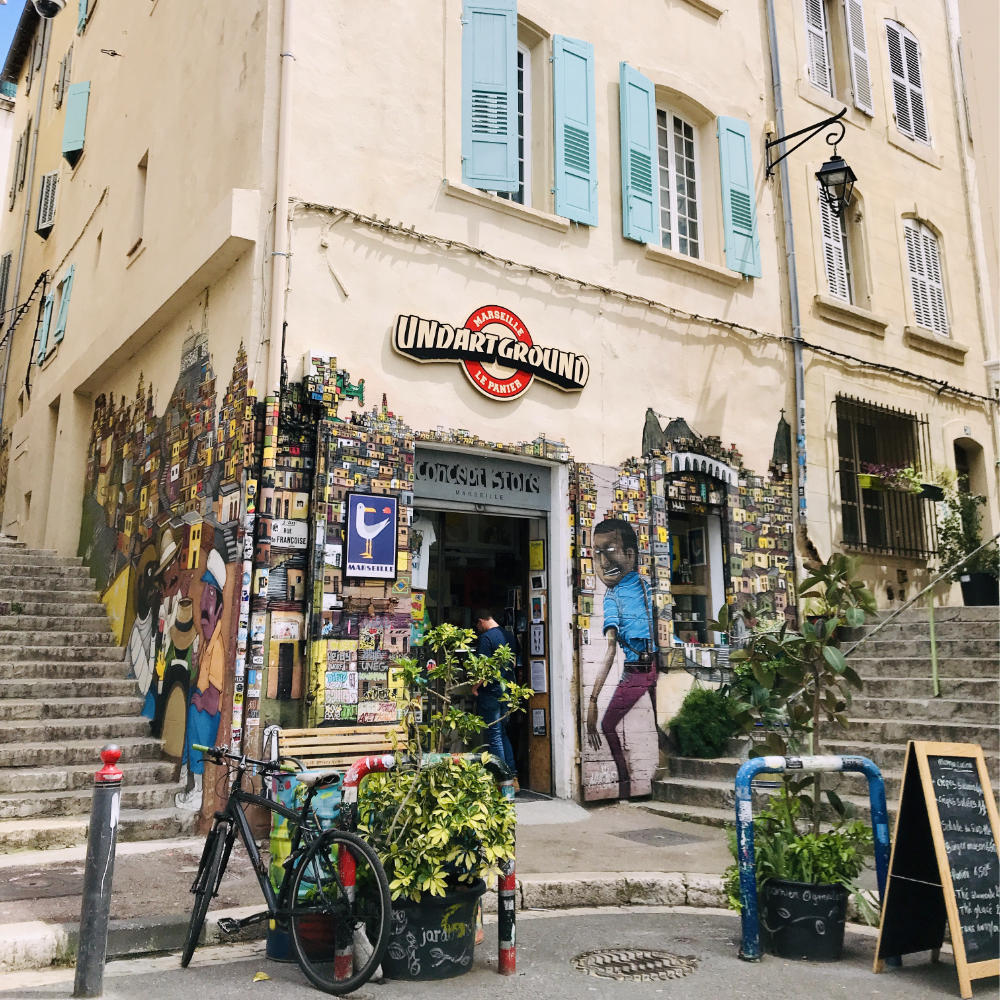
4. Admire the street art
Marseille has always been known for its street art, but with the area now becoming an artists’ hub, the street art in this quartier is at another level. Browse around and take pictures, you never know, it just might inspire you to pick up a paintbrush yourself!
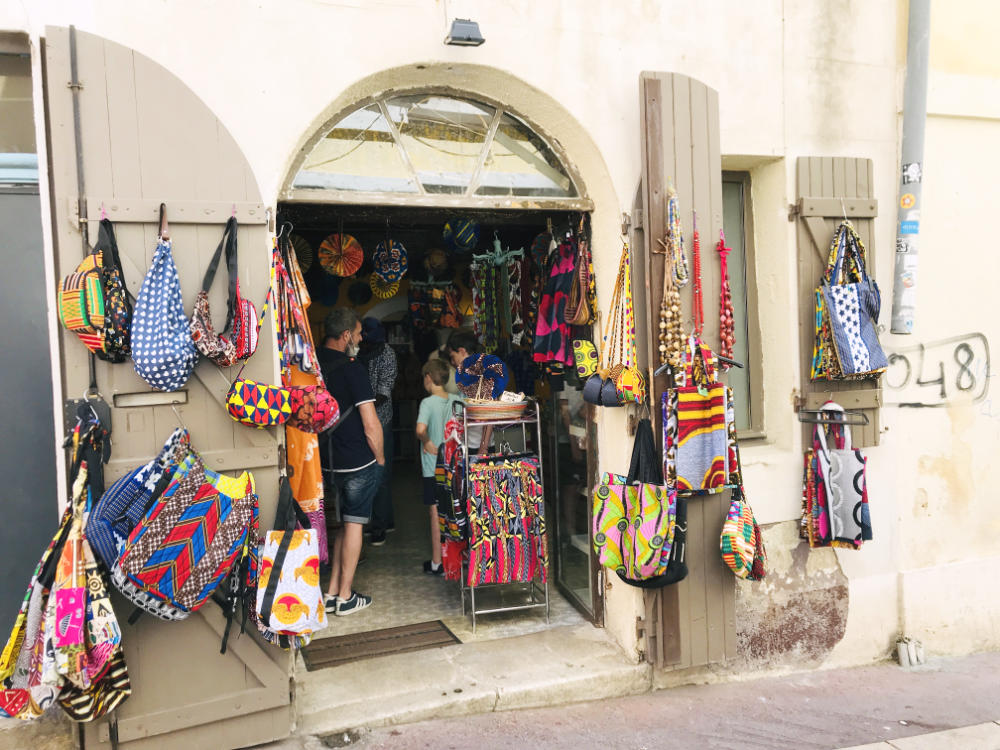
5. Take home a few souvenirs
There are many charming little stores around Le Panier, have a look around, and don’t hesitate to pick up a few provençale souvenirs. The shops here are used to English-speaking tourists, so don’t let a fear of speaking French hold you back.
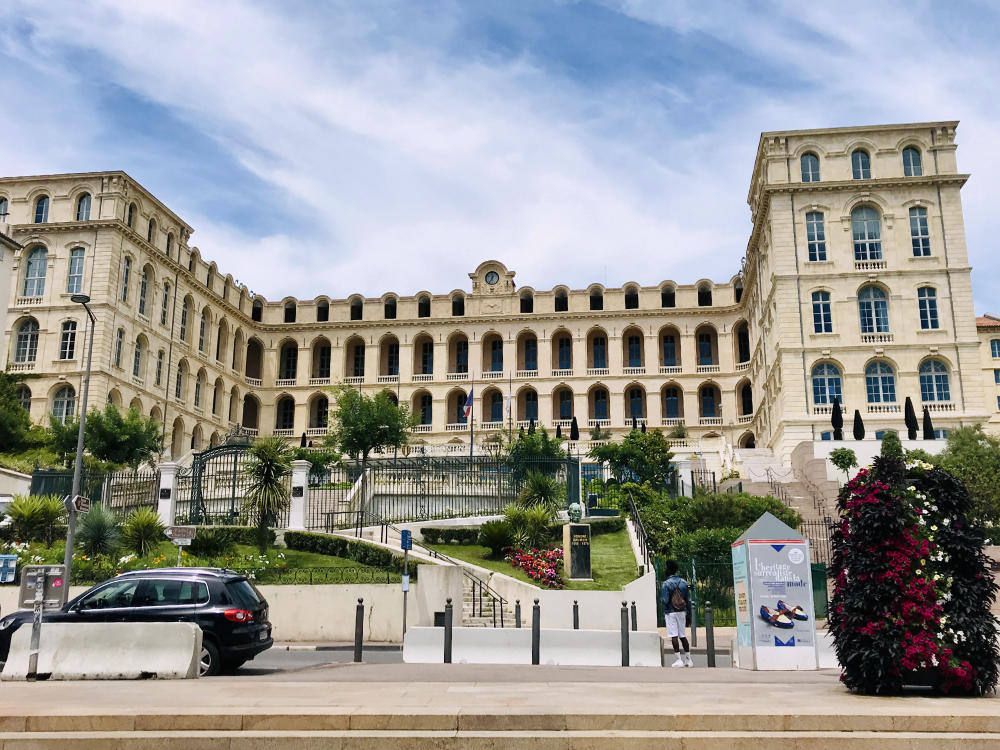
6. Have a drink at Intercontinental Hotel-Dieu
Just in front of Le Panier is Hotel Dieu which was originally a hospital until the 1970s. After several years of restoration, it is today a 5-star hotel. The views of the Vieux Port and Le Panier from the Hotel-Dieu are excellent, so if budget is not an issue, don’t hesitate to book the Hotel Dieu to stay overnight.
Otherwise, indulge in a drink at the bar and rub elbows with Marseille’s rich and famous. It is the perfect end to a visit to this little corner of Marseille!
How to get to Le Panier?
The roads around Le Panier and the Vieux Port have been restricted to one-way access, and it is not the easiest to drive to, even for locals! One recommended way to get to the Vieux Port is by metro, Line 1, stop at Vieux Port.
A simpler solution that many tourists choose however is to stay around the Vieux Port.
Where to stay around Le Panier and the Vieux Port?
There are several top areas to stay around Le Panier which is just a few steps away from the Vieux Port. Some recommended hotels are:
- Around Vieux Port – close to main attractions
- €€€ – Escale Oceania Marseille
- €€€€ – New Hotel Le Quai
- €€€€€ – Sofitel hotel – with expansive views across the Vieux Port
You can find more about where to stay in Marseille here.

So are you planning on visiting Le Panier while in Marseille? If you enjoyed that article, you may want to read more about day trips from Marseille. A bientôt!

